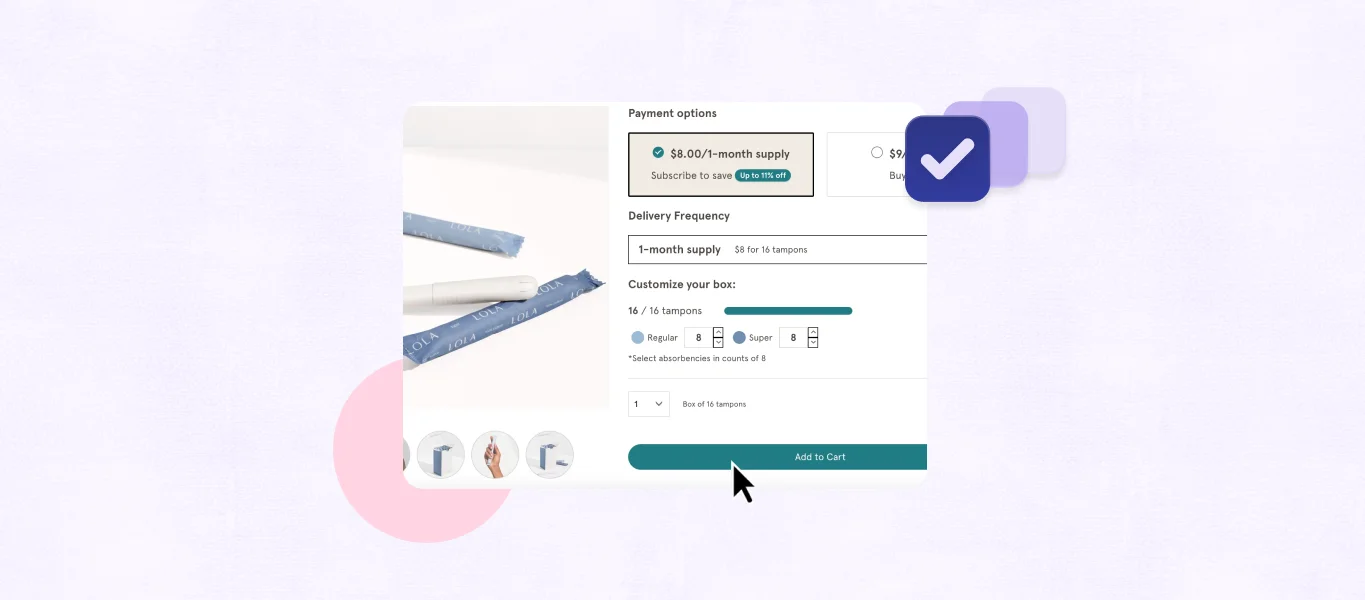As more and more merchants are turning to ecommerce to fuel their business, creativity and innovation are pivotal for making your company distinct from others in the same industry. Online merchants are turning to a more modular approach through the use of integrations and apps for subscriptions in order to curate a seamless customer experience and efficiently manage subscriptions.
So, how do you choose which apps you really need, once you’ve decided subscriptions are right for you? The easiest way to begin is to identify which growth stage your company is in—just starting, scaling up, or maturing—and the needs that come with managing subscriptions at each part of the journey.
Integrations for those new to the game
For merchants who are just starting up their subscription program, the main focus is usually on customer acquisition and ensuring a smooth launch. Once your program is optimized and set up for success in the pre-launch phase, subscription management apps that would benefit a merchant post-launch are centered around communications and marketing.
How can you increase the awareness and adoption of your new subscription program to both new and existing customers? How can you engage your customers in a long-term relationship through a subscription service and increase their customer lifetime value (LTV)?
Apps for email campaigns
Marketing back to existing customers through email campaigns can be facilitated through third-party apps like Klaviyo to segment customers from the past, present, and future. Email marketing is also a popular strategy in the scaling and maturation stage as a means to increase retention and prevent churn.
Apps to manage subscriptions via text
Another growing method of communication for ecommerce users is transactional SMS, as consumers shift to mobile-first. In fact, text messages have a 209% higher response rate than phone, email, or Facebook. Having something like RechargeSMS allows your customers to modify their subscriptions directly from their phone which has been shown to increase their LTV between 15%–30%. With text messaging, customers can:
- Access their account without logging in
- Keep track of recurring payments
- Learn more about subscription details in an easy way
- Pay for their subscription
Your customers want to engage with your business through text, and by taking advantage of SMS you can even prevent them from choosing to cancel subscriptions with special win-back strategies. Offering this type of flexibility is crucial, according to advice from our agency partners.

Apps for growing ecommerce brands
As a business moves past the launch stage and begins to scale up, the focus leans more into customization and investing in customer relationships. At this stage, you’ll see merchants looking to further enhance the customer experience to increase retention and customer engagement.
Upsell app options
Apps to consider at this stage include upsell apps like Rebuy to customize the purchasing experience with features like add-ons at checkout, subscription upgrades in the cart, and post-purchase upsells and offers. These apps can increase the average order value (AOV) in the pre-purchase phase and even help to mitigate churn with automated win-back campaigns and reactivation discounts.
Integrations for rewarding loyal customers
Loyalty and reward apps like LoyaltyLion are also beneficial to reward your subscription customers and entice them to stay even longer. These sorts of apps utilize incentive marketing to reward customers for committing to recurring subscriptions and even for referring their friends to subscribe too.
Customer support integrations
As your customer base grows in this stage, utilizing a helpdesk app like Gorgias can boost internal customer support productivity and offer your customers an enjoyable customer experience. Some of these apps—like Gorgias—can even integrate directly with RechargeSMS to manage customer support tickets received through SMS and build on that customer engagement piece.
Subscription apps for established stores
For mature subscription services that have an established customer base and a solid foundation of recurring subscriptions, the focus shifts to operational efficacy and automations. These merchants want to reduce the workload required to operate at high volumes and also analyze customer behavior.
Apps for understanding your customers
As a result, common apps in this stage include analytics apps like Google Analytics and Littledata for ecommerce tracking to understand the customer journey from marketing to subscription. Merchants want to understand where their customers are coming from and what’s encouraging them to convert their browsing into an actual sale. They can leverage experimental tests to determine the most successful approach.

Automation apps
Lastly, automation apps like Zapier take the work out of common workflows by utilizing triggers and actions to create desired outcomes between apps, like making posts about new Recharge customers as Slack channel messages. Recharge also has a native Workflows feature to automate certain actions from the first order onward, such as changing prices or swapping products automatically.
Taking your subscription services above & beyond
The options for integration into subscription services are endless; however, some merchants’ needs extend beyond what existing apps can offer. In these cases, the Recharge API can become a useful tool for custom development. While existing apps take the development work out of filling certain gaps, custom development through the API can allow merchants to stretch beyond and offer truly unique solutions.
While all of these apps can certainly be beneficial at any stage, this post exists as a starting point to begin thinking about how you can customize your business and customer experience in a focused way.
After all, the future is modular.



